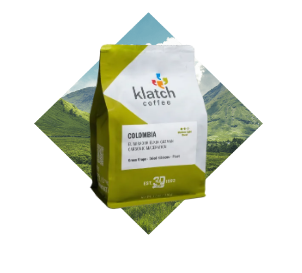
Colombia El Salvador Elkin Guzman Carbonic Maceration
Tasting Notes
Strength/Intensity
5/10Roast
MediumAbout this Coffee
Eklin Guzman planted the Catiope seeds about 6 years ago after a visit to one of the Cenicafe experimental stations located in the municipality of TIMBIO-CAUCA. There he observed a research plot where Catiope was being evaluated. It showed an impressive tree structure and yield of coffee cherries that were beneficial to production.
This new varietal is a hybrid, crossing the Caturra varietal with Ethiopian Lines, hence its name, Catiope. Blended with Orange Bourbon, the Carbonic Maceration Process allows us to achieve a brighter, more aromatic, floral, sweet coffee, as well as accentuate certain flavors and acidity thanks to the union of the 2 varietals that we select for this process. Cupping notes of green grape, dried hibiscus and pluot stone fruit.
Carbonic Maceration Process fermentation begins with the CO2 being injected into the bins, this displaces the oxygen (O2) existing in the bin leading to a maceration environment. The coffee selected from this process passes through sieves to be selected by hand, removing pintone and/or overripe beans, being very selective with the highest quality fruit to start the process. These conditions are applied as quality filters for all processes.After selection, the coffee is deposited in plastic bins to ferment in cherry for a period of 96 to 144 hours, with CO2 injection.
During this period, the coffee bean undergoes changes in the color of its mucilage that is transferred to the parchment, intense and dark pink tones, this helps to improve the sweetness of the coffee and the body of the final drink.This intensifies then fruity notes of the coffee, the changes in this first stage are more enzymatic. The coffee is pulped and deposited again in the bins with its own juice (must) which is rich in sugars and microorganisms, potentiating fermentation, these are hermetically covered to start the fermentation which, thanks to the microorganisms, begin to metabolize the sugar chains of the mucilage, developing better attributes in fragrance and acidity. CO2 is generated that displaces the oxygen (O2) existing in the bin leading to a maceration environment, this time can be between 72 to 96 hours, it is It would have a total of between 168 and 240 hours of fermentation between cherry and mucilage and then be washed and dried for a period of 18 to 25 days.
History of Colombian Coffee
As with many coffee origins, it is believed that coffee was first brought to Colombia by priests, arriving, perhaps, within a decade or two after coffee first came to the Americas via the Caribbean in the first half of the 17th century. It was likely a garden crop grown for local consumption and barter for decades. Generations of Colombians tell the story of a priest named Francisco Romero, who could be called the father of commercial coffee cultivation in Colombia. The folkloric tale goes that in the early 1800’s, Father Francisco, hearing confessions in the north eastern town of Salazar de la Palmas, assigned planting coffee to his parishioners as penance for their sins. The Archbishop of Colombia heard about this and ordered all priests to adopt the practice. Commercial production of coffee expanded quickly, moving into regions where the growing conditions were ideal.
Growing Coffee in Colombia
Even though it’s been 4,000 years, the soil resulting from the last major eruption of Tolima is still considered “young soil,” filled with nutrients that are no longer found at the same levels in old soil.
Volcanic soil contains high levels of potassium and nitrogen, which are fading or absent in other soils. “Boron”, which arrived from outer space long ago, is also present. Boron plays a key role in a diverse range of plant functions: it is essential to the structure of plant cell walls and in the creation of enzymes, and in flowering and fruit formation, meaning that Boron contributes to coffee seed yield.
In addition to nutrients, the structure of volcanic soil is also beneficial to coffee growing. It can soak up and hold moisture while, at the same time, facilitating good drainage so that the water doesn’t pool, which is not good for coffee plant roots. Coffee plants like to take a drink, then take a break. Additionally, volcanic soils are usually found on an incline, which also helps with drainage. All of these “microclimate” factors come together to bring you the complex, nuanced flavors in your cup of coffee.